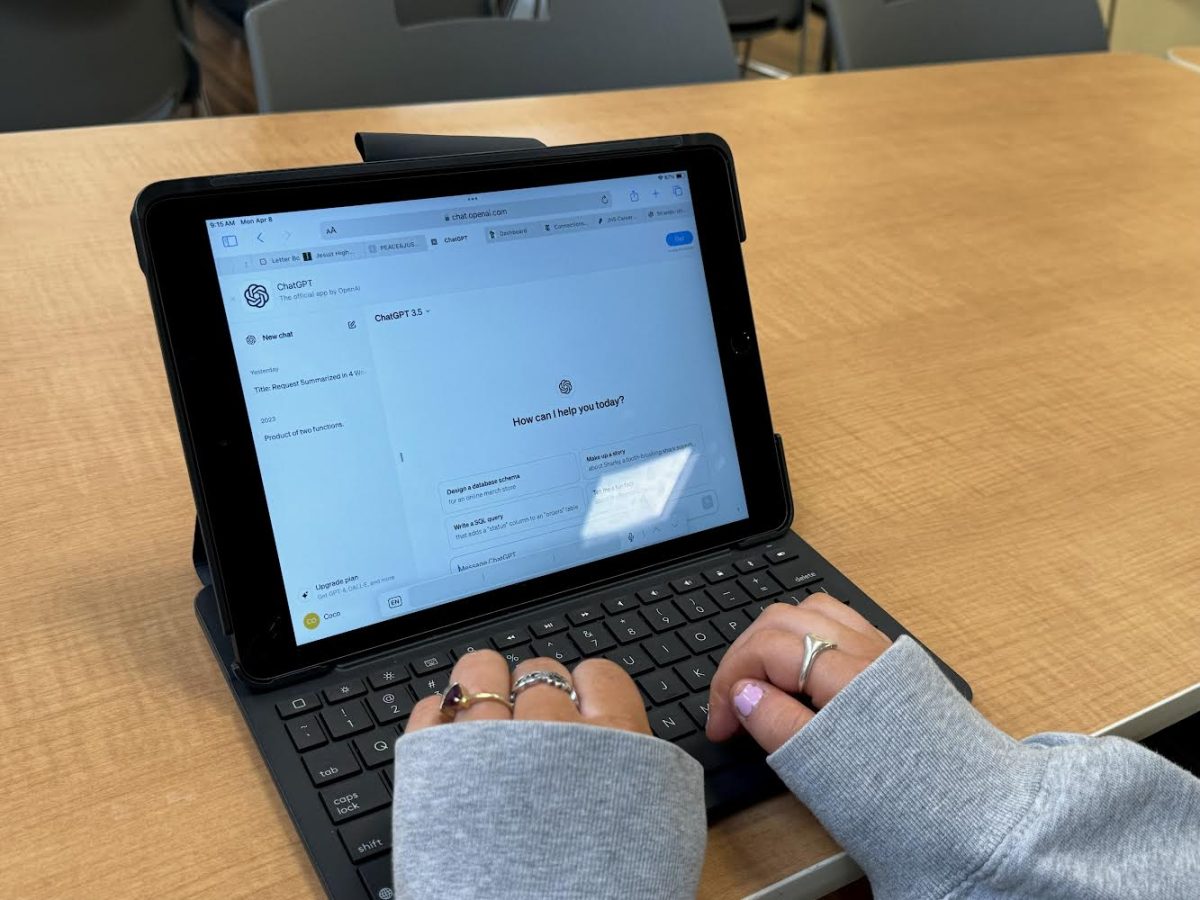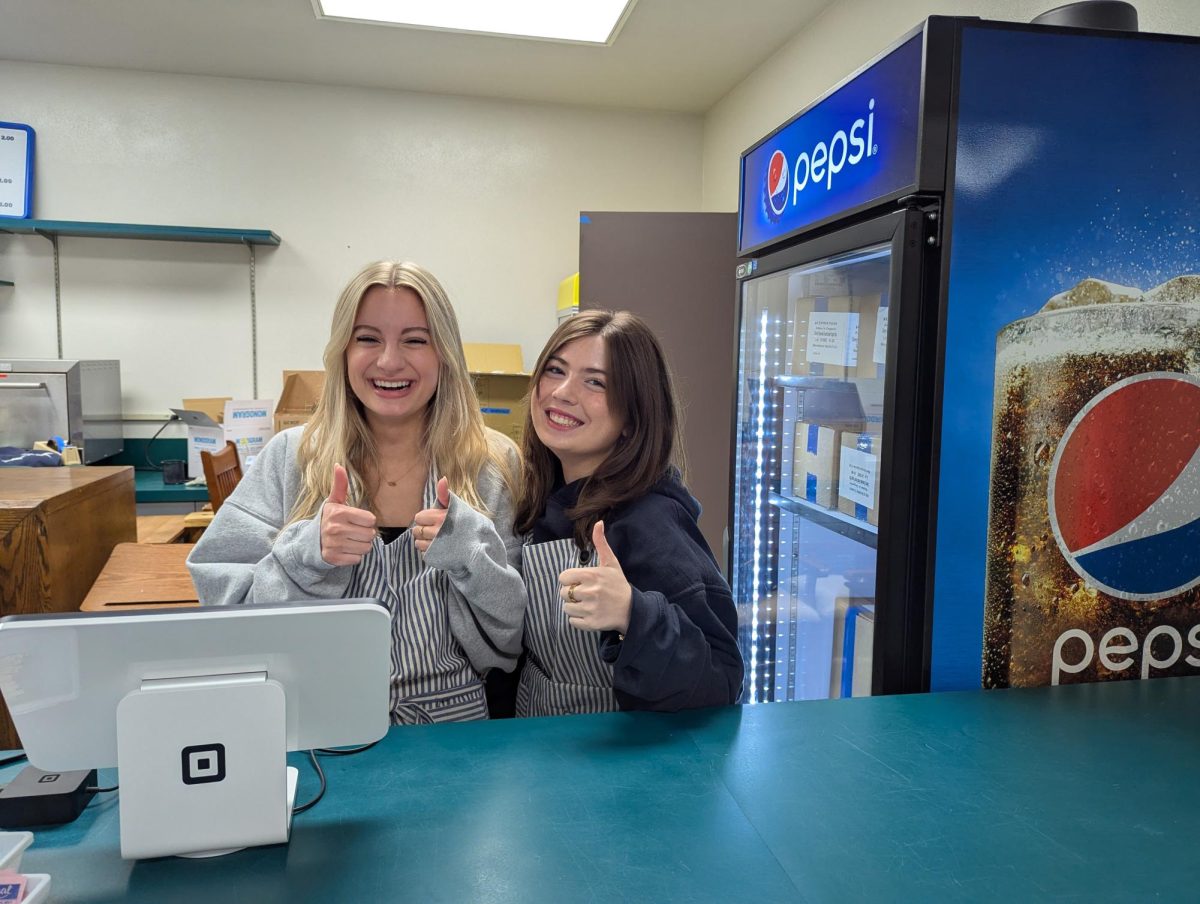In our ongoing series about the impact of AI at Jesuit High School, Jesuit Media writers are focusing on the many ways it affects a Jesuit education.
Over the course of the last few years, the use of artificial intelligence has been rapidly rising.
AI has progressively integrated into daily life and reshaped routines: automated systems now craft coffee instead of baristas, handle appointments instead of receptionists, and craft emails.
Slowly but surely, artificial intelligence has been exponentially growing, assuming roles traditionally done by humans and changing the world as we know it.
An area where AI is starting to impact is education.
Khalid Maxie, the principal of Jesuit High School, expressed his opinions regarding AI in education.
“I do believe we are in the midst of a potential educational revolution because of generative AI.”
The use of AI in education is inevitable. Students have access to a wide range of AI tools that are meant to assist them in their homework, tests, and projects.
Ms. Amanda Case, English department chair at Jesuit High School, is wrestling with how to incorporate AI into her classroom.
“I think it’s going to have a tremendous impact on education. I think it’s also going to transform the way that teachers have to teach and some of the skill sets [they] have to teach,” Case said.
Of course, AI isn’t just affecting Jesuit, schools all over the world are wrestling with the question of limiting or promoting the use of AI.
In an article “Artificial Intelligence In Education: Teachers Opinions On Ai In The Classroom”, Forbers Advisor surveyed 500 practicing educators from all around the U.S about their experience with AI in the classroom.
60% answered ‘yes’ to integrating AI into their classrooms to improve and streamline their daily teaching responsibilities, while 35% answered ‘no’, suggesting that although the majority of teachers are starting to embrace AI tools, a significant amount are still reluctant to embrace these technologies.
When answering what concerns teachers the most about incorporating AI tools in their classroom, most teachers in the survey replied plagiarism in essays/work, reduced human interaction in learning, and data privacy and security.
AI tools such as Chat GPT are capable of writing an entire essay with a simple requested prompt.
Students can type in “write me a 5 paragraph essay with an intro, three body paragraphs, a conclusion about the events of Pearl Harbor”, and the chatbot will craft an essay in less than 15 seconds that would typically take students hours to write.
“I think there are a lot of limitations, and I don’t like it for those purposes,” Case said. “I also think it takes away from students like analytical and critical thinking, which I think are the most important parts of what English teachers are trying to teach.”
But limiting the use of these tools could mean not fully preparing students for a world filled with Artificial Intelligence.
Senior David Marsh is experiencing first-hand the effects of AI on students.
“I think students should have access to Chat GPT just because that’s kind of the direction I feel like the world is headed in. I feel like the people who can use AI effectively are going to be the people who will thrive in the World of Tomorrow.”
An article from The New York Times, “How teachers and students feel about A.I.”, explores the different perspectives students and teachers have on AI.
Nicole Haddad, an educator at Southern Methodist University, explains how she is incorporating AI in her classroom.
“Before they even use ChatGPT, I help students discern what is worth knowing, figuring out how to look it up, and what information or research is worth ‘outsourcing’ to A.I. I also teach students how to think critically about the data collected from the chatbot — what might be missing, what can be improved and how they can expand the ‘conversation’ to get richer feedback.”
Opinions and course of actions regarding AI vary from each individual, but the consensus is that AI is not going anywhere.
“I would say buckle up, Artificial and degenerative AI models are here to stay, we truly need to figure out how this will benefit our students. And we also need to be at the forefront of figuring out what concerns we have about general AI models so that we can plan accordingly,” Maxie said.










